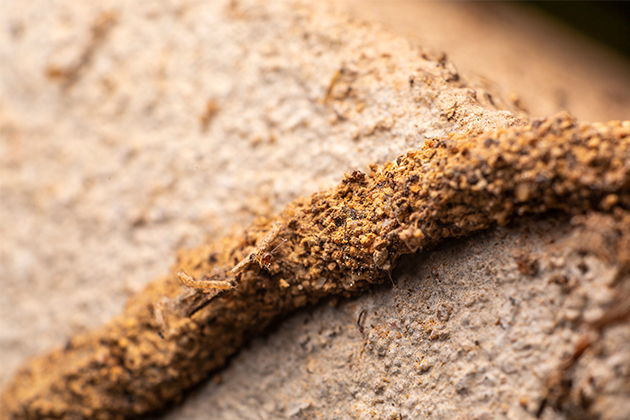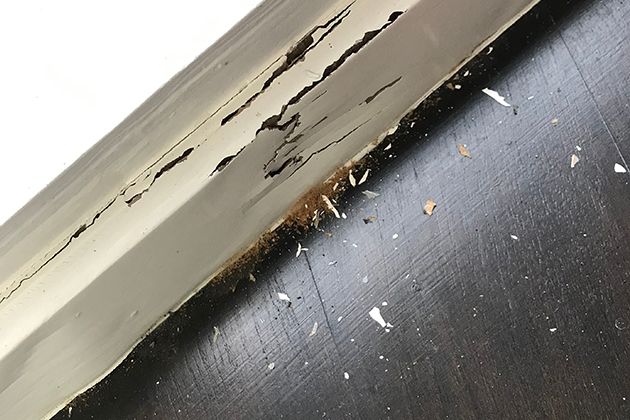5 signs your house may have termites
Termites are one of the most destructive pests in Australia – and with around 20 different species able to chew through solid wood anywhere in and around your home, it pays to know the signs of an infestation before it spreads too far.
Subterranean termite species are small, soft-bodied insects that utilise underground tunnels and timber nests to infiltrate thousands of homes across the country. Similar to black ants, termites are attracted to moisture, ‘sweet’ food sources and rich soils.
While there are preventative measures you can take to deter termites from your property, termite infestations are serious issues and should be managed by professional pest controllers.
If you think you’ve got termites it’s important to act fast – but here are five warning signs you should watch out for both in and around your home.
1. Mud ‘tubes’
As Australia’s most common termites are subterranean, they require special shelter for protection once they emerge from the ground. Common termite mud workings look like miniature tubes, and are often made of dirt or termite droppings. Though it can be difficult to spot these mud workings, they are one of the most common warning signs of a termite infestation – and enable these critters to travel across exposed terrain to infiltrate your home.
Unfortunately, if mud workings are spotted, it’s too late to proactively combat termites. However, avoiding build-ups of moist soil or dirt around the perimeter of your house is one way to prevent the frequency of termite travel across your property.

2. Power at your house repeatedly short circuits
Termites are often attracted to the warmth of electrical fittings behind walls – so if you notice that short circuits are a regular occurrence at your place, these critters may be the reason. A good way to confirm this is by inspecting your electrical fittings and power points. If you spot a build-up of earthy materials such as damp mud or soil, you may have a termite problem.
Attempting to fix these impacted power points yourself can be extremely hazardous, so it’s best to contact a professional team to clean up the area and fix this for you.
3. Noticeable floor or ceiling damage
Though they mostly eat wood, termites can feed on anything that crosses their path – and though they are small, they can enforce massive amounts of damage to the structural integrity of items such as laminated floors, skirting boards and ceiling beams.
If you spot noticeable blisters, cracks or sags on any of these surfaces, there’s a high possibility that termites are present. Another way to detect termite-inflicted damage is to knock on timber around your house. If it sounds hollow, it is likely termites have eaten away at it.

4. Swarms of flying insects outdoors
Australia is home to many species of flying insects – but if you spot swarms of white, winged pests during spring and summer, your home may be a nesting place for alates, or ‘flying termites’. These swarms are a strong indication that termite colonies are present in or around your house.
Alates reproduce in rotting tree stumps or large piles of wood, so it’s a good idea to clear any excess wood from around your house to prevent them from nesting on your property.
5. Cracked paint or plaster on walls
Termite damage to walls often resembles minor water damage, but is quite a serious and complicated issue to fix. This damage often gives the wall paint a ‘bubbling’ or ‘honeycombing’ effect, and is a result of termites eating away at timber in the internal walls, affecting the walls’ structural integrity, and causing cracks in the paint or plaster.
If you spot this effect on your walls, it is too late for prevention and it’s time to call in an expert pest team to manage your house’s termite problem.



